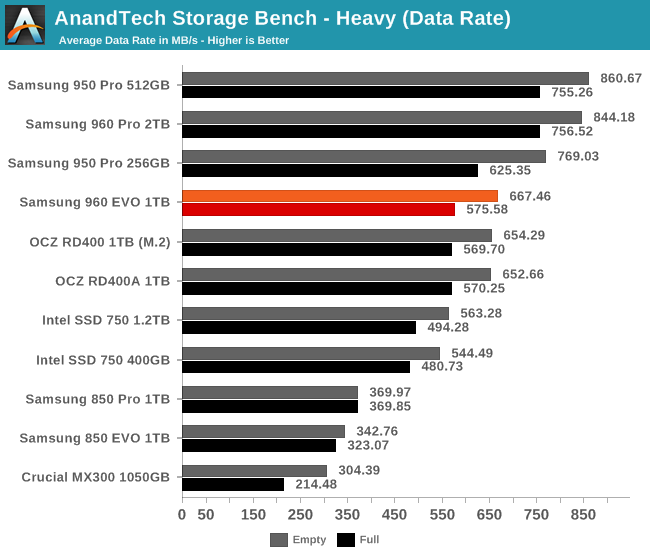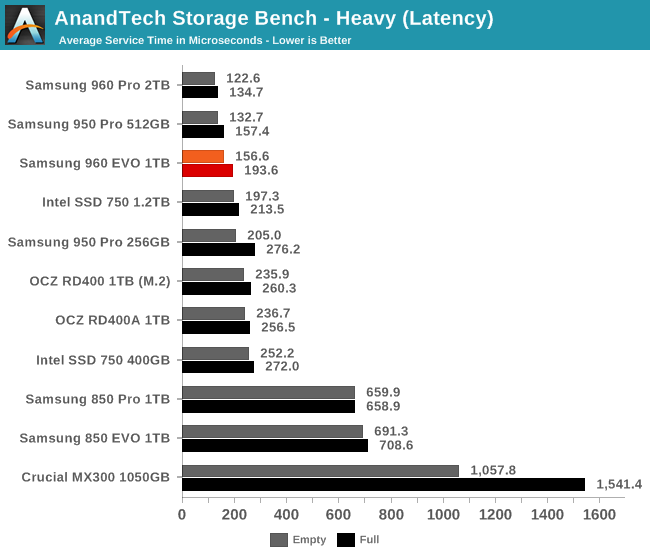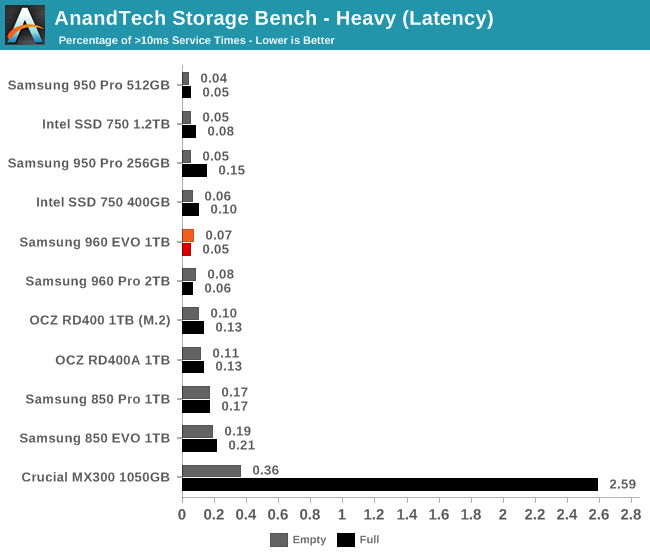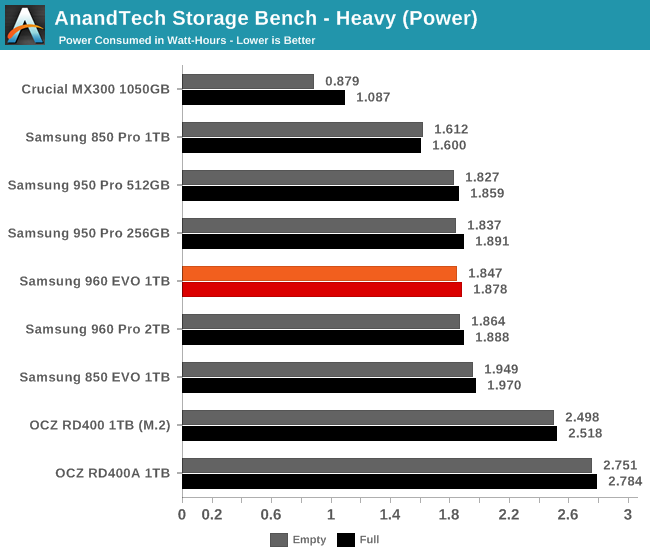The Samsung 960 EVO (1TB) Review
by Billy Tallis on November 15, 2016 10:00 AM ESTAnandTech Storage Bench - Heavy
Our Heavy storage benchmark is proportionally more write-heavy than The Destroyer, but much shorter overall. The total writes in the Heavy test aren't enough to fill the drive, so performance never drops down to steady state. This test is far more representative of a power user's day to day usage, and is heavily influenced by the drive's peak performance. The Heavy workload test details can be found here.

The 960 EVO's average data rates on the Heavy test are slower than the 950 Pro and 960 Pro, but on par with the OCZ RD400 and faster than the Intel 750.

The 960 EVO takes third place for average service times, providing lower latency than the smallest 950 Pro despite slower overall data rates. In comparison to SATA SSDs, the latency differences are all pretty minor.

Like the 960 Pro, the 960 EVO oddly has slightly fewer high-latency outliers when this test is run on a full drive instead of a freshly-erased drive. In spite of this quirk of the drive's garbage collection routines, both drives have well-controlled latency.

The 960 EVO's power efficiency on the Heavy test is virtually the same as the 960 Pro and the 950 Pro, and not significantly worse than the fastest SATA drives.










87 Comments
View All Comments
TheinsanegamerN - Tuesday, November 15, 2016 - link
Is there currently any consumer software that can change these settings?Billy Tallis - Tuesday, November 15, 2016 - link
I use nvme-cli on Linux to manually test these settings, and there's a patch working its way toward a stable kernel release that will let supporting drives automatically make use of their various idle states. I'm not aware of any Windows tools that give the same degree of fine-grained control, but Intel's tools for enterprise SSDs and the 750 have some power management options.TheinsanegamerN - Tuesday, November 15, 2016 - link
That would be nice. I'd love to be able to set my 950 pro to a max of, say 2 watt on battery, or set the maximum speed to sata III speed (on battery), if it meant better battery life, and enable full speed when on mains power.philehidiot - Tuesday, November 15, 2016 - link
Yeh I noted the thermal limits kicking in and I did wonder if there's any major benefit from hacking these things, putting on some thermal goop, a big heat sink and a fan. Obviously it'll probably not help in the majority of cases but the mentalist part of me was pondering just how much performance there is to be unlocked.TheinsanegamerN - Tuesday, November 15, 2016 - link
The fan would be a bit of overkill, but the 950 pro showed some gains with a passive heatsink installed. The 960 would probably benefit even more.philehidiot - Tuesday, November 22, 2016 - link
Time to break out the liquid nitrogen. If anyone at work asks where it has all gone I'll just say I was remove the mother of all warts from a patient.philehidiot - Tuesday, November 22, 2016 - link
*removing. Bloody spelling.nagi603 - Tuesday, November 15, 2016 - link
A shame they dropped the write endurance to half of the 950!TheinsanegamerN - Tuesday, November 15, 2016 - link
TLC vs MLCbull2760 - Tuesday, November 15, 2016 - link
Why do you not show consistent results. In some tests you include the Intel 750 and on other you exclude it in the graph. You excluded the Intel 750 in the power consumption both times. Are you not able to calculate the power being used when the Intel drive is being used?